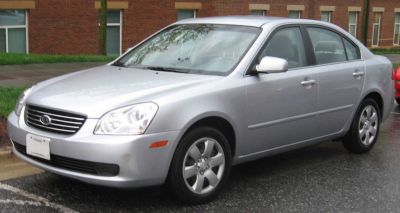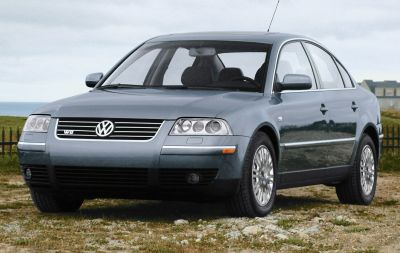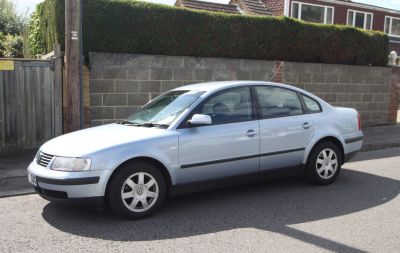 1961 Mercedes-Benz Fintail (W110) Dimensions, Size & Specs
1961 Mercedes-Benz Fintail (W110) Dimensions, Size & SpecsMeasurements of the 1961 Mercedes-Benz Fintail, engineered for optimal performance and comfort
| Dimensions | |
|---|---|
| Length: | 4730 mm186.2 in15.5 ft |
| Width: | 1795 mm70.7 in5.9 ft |
| Height: | 1495 mm58.9 in4.9 ft |
| Weight Specifications | |
| Curb Weight: | 1250-1325 kg2756-2921 lbs |
| Maximal permitted Weight: | 1700-1825 kg3748-4023 lbs |
| Tire Specifications | |
| Rims Size: | 13-inch rims:
|
The Mercedes-Benz Fintail (W110) sedan, produced between 1961 and 1968, is a classic mid-sized luxury car that encapsulates the design and engineering qualities of the early 1960s Mercedes lineup. Known for its distinctive rear 'fintail' styling, the W110 was offered primarily as a sedan and became popular for its blend of elegance, durability, and advanced technology for its time.
In terms of dimensions, the W110 sedan measures 4730 mm (186.2 inches) in length, providing a spacious cabin while maintaining manageable overall size for city and highway driving. Its width is 1795 mm (70.7 inches), which offers comfortable interior shoulder room without compromising aerodynamics, and the sedan's height stands at 1495 mm (58.9 inches), contributing to a balanced and sleek profile.
The curb weight of the Mercedes-Benz Fintail ranges from 1250 to 1325 kg (approximately 2,756 to 2,920 lbs), depending on the specific model and equipment. This relatively moderate weight helps provide a stable and refined driving experience with characteristic Mercedes-Benz solidity. The maximum weight capacity ranges between 1700 and 1825 kg (3,748 to 4,022 lbs), indicating ample load-bearing capabilities for passengers and cargo.
The W110 was equipped with 5J x 13 rims, standard for vehicles of this period, balancing ride comfort and handling stability. With its combination of size, weight, and classic engineering, the Fintail W110 remains an iconic example of Mercedes-Benz’s dedication to design and quality during the 1960s, appealing to collectors and vintage car enthusiasts worldwide.
Discover the standout features that make the 1961 Mercedes-Benz Fintail a leader in its class
Have a question? Please check our knowledgebase first.
The Mercedes-Benz Fintail (W110) sedan from the 1961-1968 production period measures 4730 mm (186.2 inches) in length, 1795 mm (70.7 inches) in width, and 1495 mm (58.9 inches) in height. These dimensions reflect a classic mid-sized sedan profile typical of early 1960s luxury vehicles, offering a spacious cabin without excessive bulk. The size strikes a balance between maneuverability for its era and sufficient interior space for passengers.
The curb weight of the Mercedes-Benz Fintail (W110) varies between 1250 kg to 1325 kg (approximately 2756 to 2921 pounds), depending on the specific model and equipment. Its maximum permissible weight ranges from 1700 kg to 1825 kg (about 3748 to 4024 pounds). This weight class positions the W110 as a mid-sized sedan with solid construction, offering a sturdy driving experience while accommodating passengers and luggage within the safety limits established for vehicles of that time.
The Mercedes-Benz Fintail (W110) is equipped with rims measuring 5J x 13, referring to a 13-inch rim diameter. These 13-inch wheels were standard for sedans of this model's era, providing a good balance of ride comfort and handling characteristics. The rim width of 5 inches (J marking indicates the contour profile for the bead seat) supported tire sizes commonly used during the 1960s, helping to maintain the vehicle's classic driving dynamics and road grip.
Yes, the Mercedes-Benz Fintail (W110) can comfortably fit into a standard residential garage. With dimensions of 4730 mm (186.2 inches) in length, 1795 mm (70.7 inches) in width, and 1495 mm (58.9 inches) in height, it is smaller than many modern sedans and SUVs, which often exceed 4.8 meters (about 189 inches) in length. Standard garages typically measure around 6 meters (approximately 236 inches) in length and 2.5 to 3 meters (98 to 118 inches) in width, so the W110 fits well within these parameters, allowing room for easy entry and exit.
The Mercedes-Benz Fintail (W110) replaced the W121 and W120 series models, commonly referred to as the earlier Ponton models. Compared to the predecessors, the W110 was slightly larger and more modern in its design. While previous models typically measured closer to 4600 mm (181 inches) in length and had narrower widths around 1700 mm (67 inches), the W110 extended to 4730 mm (186.2 inches) in length and 1795 mm (70.7 inches) in width. This increment provided improved interior space and comfort, reflecting the evolution of passenger needs and growing competition in the luxury sedan market of the 1960s.
In the 1960s luxury sedan segment, the Mercedes-Benz Fintail (W110) was competitive in size. For example, the BMW 1500 sedan released in the early 1960s was slightly shorter, around 4480 mm (176.4 inches) long and narrower at approximately 1680 mm (66.1 inches) wide. Meanwhile, American sedans of the era were typically larger, often exceeding 5 meters (197 inches) in length. The W110's dimensions offered a middle ground that made it appealing in Europe, balancing maneuverability in tighter city environments with ample interior space that buyers expected from a premium Mercedes-Benz.
The Mercedes-Benz Fintail (W110) was designed with passenger comfort as a priority. Its extended length of 4730 mm (186.2 inches) and width of 1795 mm (70.7 inches) allowed for spacious seating arrangements typical of a mid-sized luxury sedan of the early ’60s. Front and rear passengers benefit from generous headroom, aided by the vehicle’s 1495 mm (58.9 inches) height. The vehicle's interior was tailored with quality materials and ergonomic designs to complement the dimensional advantages, providing comfortable legroom and shoulder space for four adult occupants, with the potential to carry five in tight conditions.
With a curb weight ranging from 1250 kg to 1325 kg (2756 to 2921 pounds), the Mercedes-Benz Fintail (W110) was relatively lightweight for its class. This weight range contributed positively to its driving dynamics, allowing a balance of stability and agility that was appreciated in both city and highway driving conditions. From a fuel efficiency standpoint, the moderate weight helped maintain reasonable consumption figures for the technology available in the 1960s, as heavier vehicles generally demanded more power and fuel. The W110’s balanced weight aided in delivering refined ride quality while preserving manageable fuel use for its time.
During its production from 1961 to 1968, the Mercedes-Benz Fintail (W110) was positioned as a reliable, elegant, and moderately sized luxury sedan primarily targeted at professionals, families, and executives who valued durability and understated sophistication. It was well-suited to European urban environments and highway travel, appreciated for its quality engineering, longevity, and comfort. The W110 catered to customers looking for a premium vehicle that combined traditional Mercedes-Benz build quality with modern styling cues such as the signature 'fintail' rear design, which subtly echoed American influences while retaining European class.
The Mercedes-Benz Fintail (W110) represented a significant step forward compared to previous models, particularly the W120 and W121 Ponton series. Dimensionally, the W110 was slightly larger, providing enhanced passenger comfort and cargo space. Engineering improvements included updated suspension design for better ride quality and handling, as well as advancements in safety with stronger body structures and improved braking systems. The Fintail also introduced more powerful and efficient engine options, aligning with evolving automotive technology trends. Overall, the W110 was a refinement that blended robust Mercedes-Benz tradition with incremental modernization both in size and mechanical sophistication.
Discover similar sized cars.

| Production: | 2005-2008 |
|---|---|
| Model Year: | 2005 |
| Length: | 4735 mm186.4 in |
| Width: | 1805 mm71.1 in |
| Height: | 1480 mm58.3 in |

| Production: | 2005-2008 |
|---|---|
| Model Year: | 2005 |
| Length: | 4735 mm186.4 in |
| Width: | 1805 mm71.1 in |
| Height: | 1480 mm58.3 in |

| Model Year: | 2018 |
|---|---|
| Length: | 4750 mm187.0 in |
| Width: | 1820 mm71.7 in |
| Height: | 1488 mm58.6 in |

| Production: | 2014-2017 |
|---|---|
| Model Year: | 2014 |
| Length: | 4750 mm187.0 in |
| Width: | 1820 mm71.7 in |
| Height: | 1488 mm58.6 in |

| Production: | 2000-2005 |
|---|---|
| Model Year: | 2000 |
| Length: | 4704 mm185.2 in |
| Width: | 1746 mm68.7 in |
| Height: | 1463 mm57.6 in |

| Production: | 1996-2000 |
|---|---|
| Model Year: | 1996 |
| Length: | 4670-4703 mm183.9-185.2 in |
| Width: | 1740-1746 mm68.5-68.7 in |
| Height: | 1462 mm57.6 in |

| Production: | 2016-present |
|---|---|
| Model Year: | 2016 |
| Length: | 4725 mm186.0 in |
| Width: | 1802 mm70.9 in |
| Height: | 1478 mm58.2 in |

| Production: | 2019-present |
|---|---|
| Model Year: | 2019 |
| Length: | 4772 mm187.9 in |
| Width: | 1804 mm71.0 in |
| Height: | 1509 mm59.4 in |
